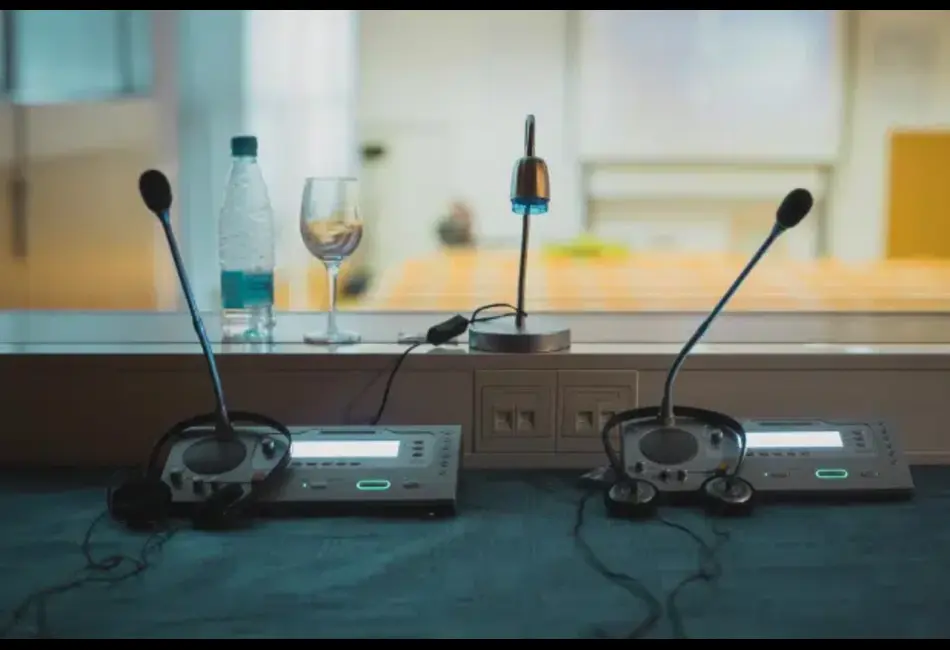Simultaneous Interpretation for Conferences with Multilingual Panels: What to Prepare

Introduction: Navigating Multilingual Conferences with Precision
In today’s globalized landscape, conferences often bring together diverse speakers and audiences from various linguistic backgrounds. Ensuring seamless communication in such settings is paramount. Simultaneous interpretation emerges as a vital tool, enabling real-time translation and fostering inclusive dialogue. However, the success of this endeavor hinges on meticulous planning and execution.
This article delves into the essential preparations and logistical considerations for implementing simultaneous interpretation in conferences featuring multilingual panels. including the integration of machine translation software to enhance accessibility and efficiency.
Understanding Simultaneous Interpretation
Simultaneous interpretation translates spoken words or speech on the fly in one language to another consecutively, which means that participants at a given session will be able to get a message in a language that suits them. Simultaneous interpretation as opposed to consecutive interpretation does not involve speakers taking breaks to allow translators to do the translation work.
This method is particularly beneficial in:
- International conferences
- Multilingual panel discussions
- Diplomatic assemblies
- Corporate meetings with global stakeholders
Key Preparations for Effective Simultaneous Interpretation
-
Early Engagement with Language Service Providers (LSPs)
Initiate collaboration with experienced LSPs during the initial planning stages. Early engagement allows for:
- Accurate assessment of linguistic needs
- Allocation of qualified interpreters
- Integration of interpretation logistics into the overall event plan
Reference: Interprenet emphasizes the importance of involving interpretation providers early to ensure seamless execution.
-
Selection of Qualified Interpreters
Ensure that interpreters:
- Possess proficiency in the required language pairs
- Have expertise in the subject matter of the conference
- Are certified and experienced in simultaneous interpretatio
Providing interpreters with event materials in advance enhances their preparedness and accuracy.
Reference: Ateric Translations highlights the significance of choosing qualified interpreters familiar with the event’s content.
-
Technical Equipment and Setup
Equip the venue with:
- Soundproof interpreter booths with clear visibility of the speakers
- High-quality microphones and headsets
- Reliable audio transmission systems (e.g., infrared or FM systems)
For high-profile events, investing in luxury technology—such as studio-grade audio gear, advanced RSI platforms, and modular booth systems—ensures flawless real-time communication and a premium experience for all participants. Consider the use of Remote Simultaneous Interpretation (RSI) platforms for hybrid or virtual components of the conference.
References: Interactio explains why it is crucial to arrange the booth as well as what technical needs are essential to interpret properly.
-
Venue Considerations
Select a venue that accommodates:
- Adequate space for interpreter booth
- Optimal acoustics to minimize background nois
- Infrastructure to support necessary technical equipment
Make sure that an arrangement supports the effective communication between interpreters, orators, and people in the crowd.
-
Rehearsals and Technical Checks
Conduct thorough rehearsals to:
- Test all equipment and resolve technical issues
- Familiarize interpreters with the venue and event flow
- Coordinate timing and transitions between speakers and interpreters
Rehearsals contribute to a polished and professional delivery during the actual event.
- Clear Communication with Participants
Inform attendees about:
- Availability of interpretation services
- Instructions for accessing interpretation channels or devices
- Etiquette for interacting in a multilingual setting
Providing this information enhances participant experience and engagement.
Logistics and Operational Considerations
-
Interpreter Scheduling and Rotation
Since many interpreters respond to the cognitive needs of consecutive interpretation, schedule interpreters in groups, with frequent breaks in-between. In most cases, interpreters take turns of 20-30 minutes in order to keep in top shape.
-
Material Preparation and Distribution
Supply interpreters with:
- Conference agendas
- Speaker bios and presentation materials
- Glossaries of technical terms and acronyms
These resources thus help the interpreters to provide the correct translations of the work in a given context provided the translators get access to the material early in its lifetime.
-
Technical Support and Troubleshooting
Assign dedicated technical staff to:
- Monitor audio and interpretation equipment
- Address any technical issues promptly
- Assist attendees with interpretation devices or platforms
Proactive technical support ensures minimal disruptions during the conference.
Enhancing Accessibility and Inclusivity
Incorporate additional measures to promote inclusivity:
- Provide sign language interpretation for Deaf or hard-of-hearing participants
- Offer real-time captioning services
- Ensure that digital platforms used are accessible to individuals with disabilities
These efforts demonstrate a commitment to accommodating diverse needs and fostering an inclusive environment.
Conclusion: Achieving Multilingual Excellence
Practicing simultaneous interpretation during multilingual panel conferences needs pre-planning, work with professional experts, and technical and logistics procedures.
Priorities on these factors help organizations to have successful communication, a better experience of the participants as well as the maintenance of integrity of the intended purpose of events.
